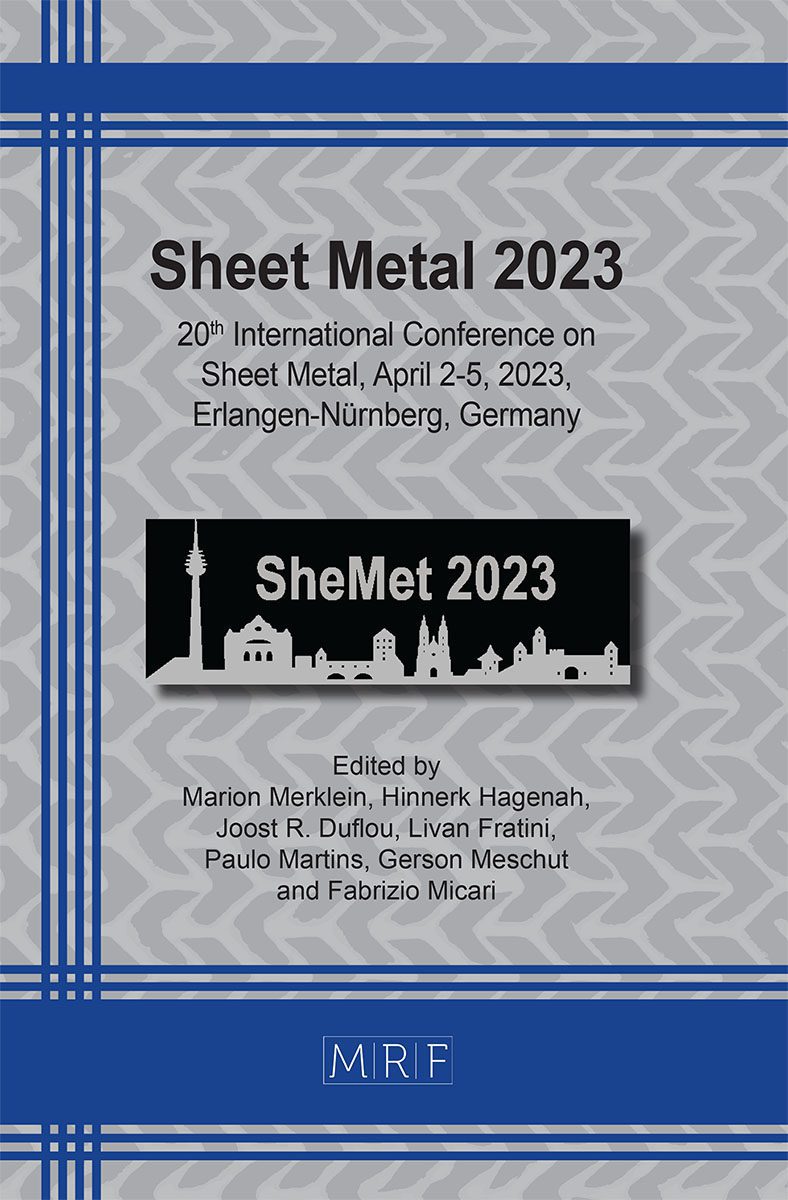Extrusion as an energy-efficient manufacturing process for thermoplastic organosheets
Bastian Richter, Benedikt Neitzel, Florian Puch
download PDFAbstract. Organosheets combine the advantages of reinforcement fibers and thermoplastic polymers. By pairing these two materials, composites with outstanding mechanical properties and low densities can be produced. These semi-finished products can be further processed into complex and functionalized components by thermoforming or injection molding. There are a number of different manufacturing processes for continuous fiber reinforced thermoplastics (CFRT), however, most of them require long production times and recurrent melting of the polymer resulting in high energy and manufacturing costs. This study presents a novel extrusion process, that enables a continuous production of reinforced thermoplastic sheets with only one melting step. Due to the high energy efficiency and wide range of processible materials, this process shows a high potential for an economical production of CFRT. To investigate the extrusion process in more detail, the influence of the processing and the flow behavior of the polymer on the impregnation quality and the mechanical properties of the composites were studied. The results showed increasing fiber volume contents with lower polymer viscosities. Furthermore, higher die temperatures and pressures resulted in higher fiber volume contents and thus in higher mechanical properties. The experiments also revealed that a complete impregnation can currently not be achieved without an additional small double belt press due to the line load of the calender, the high viscosity of the melt and the short impregnation time.
Keywords
Fiber Reinforced Plastic, Extrusion, Thermoplastic Composites
Published online 3/17/2023, 8 pages
Copyright © 2023 by the author(s)
Published under license by Materials Research Forum LLC., Millersville PA, USA
Citation: Bastian Richter, Benedikt Neitzel, Florian Puch, Extrusion as an energy-efficient manufacturing process for thermoplastic organosheets, Materials Research Proceedings, Vol. 25, pp 345-352, 2023
DOI: https://doi.org/10.21741/9781644902417-43
The article was published as article 43 of the book Sheet Metal 2023
![]() Content from this work may be used under the terms of the Creative Commons Attribution 3.0 licence. Any further distribution of this work must maintain attribution to the author(s) and the title of the work, journal citation and DOI.
Content from this work may be used under the terms of the Creative Commons Attribution 3.0 licence. Any further distribution of this work must maintain attribution to the author(s) and the title of the work, journal citation and DOI.
References
[1] P. Kiss, W. Stadlbauer, C. Burgstaller, et al., Development of high-performance glass fibre-polypropylene composite laminates, Compos. Part A: Appl. Sci. Manuf. 138 (2020) 106056. https://doi.org/10.1016/j.compositesa.2020.106056
[2] P. Kiss, J. Schoefer, W. Stadlbauer, et al., An experimental study of glass fibre roving sizings and yarn finishes in high-performance GF-PA6 and GF-PPS composite laminates, Compos. Part B Eng. 204 (2021) 108487. https://doi.org/10.1016/j.compositesb.2020.108487
[3] G. Toffe, Life Cycle Evaluation of Manufacturing and Mechanical Properties for Novel Natural Fibre Composites, Ph. D. thesis, University Hertfordshire (2020).
[4] F. Piott, A. Krämer, A. Lück, et al., Increasing the performance of continuous compression moulding by local pressure adaption, Adv. Manuf. Pol. & Compos. Sci. 7 (2021) 1–14. https://doi.org/10.1080/20550340.2021.1888209
[5] M. Christmann, Optimierung der Organoblechherstellung durch 2D-Imprägnierung, Ph. D. thesis, Technische Universität Kaiserslautern (2014).
[6] M. Christmann, L. Medina, P. Mitschang, Effect of inhomogeneous temperature distribution on the impregnation process of the continuous compression molding technology, J. Thermoplast. Compos. Mater. 30 (2017) 1285–1302. https://doi.org/10.1177/0892705716632855
[7] S. Mörl, Kurzfasermodifikation matrixreicher Zonen gewebeverstärkter, thermoplastischer Verbundwerkstoffe mittels In-Situ-Schmelzeimprägnierung, Ph. D. thesis, Universität Bayreuth (2022).
[8] S. Sockol, C. Doerffel, J. Mehnert, et al., Ultrasonic-Impregnation for Fiber-Reinforced Thermoplastic Prepreg Production, KEM 742 (2017) 17–24. https://doi.org/10.4028/www.scientific.net/KEM.742.17
[9] V. A. Bühler, Gradual Impregnation during the Production of Thermoplastic Composites, Ph. D. thesis, Technische Universität München (2017).
[10] F. Puch, B. Richter, Influence of the Processing on the Properties of Continuous Fiber Reinforced Thermoplastic Sheets Prepared by Extrusion, 37th International Conference of the PPS, Fukuoka (2022).
[11] Z. Zhicheng, X. Chunling, L. Ying, et al., Modeling and experimental characterization of power-law fluids impregnation behavior in fabric during compression molding, J. Reinf. Plat. Compos. 36 (2017) 176–185. https://doi.org/10.1177/0731684416677744
[12] J. Studer, C. Dransfeld, J. Jauregui Cano, et al., Effect of fabric architecture, compaction and permeability on through thickness thermoplastic melt impregnation, Compos. Part A: Appl. Sci. Manuf. 122 (2019) 45–53. https://doi.org/10.1016/j.compositesa.2019.04.008































